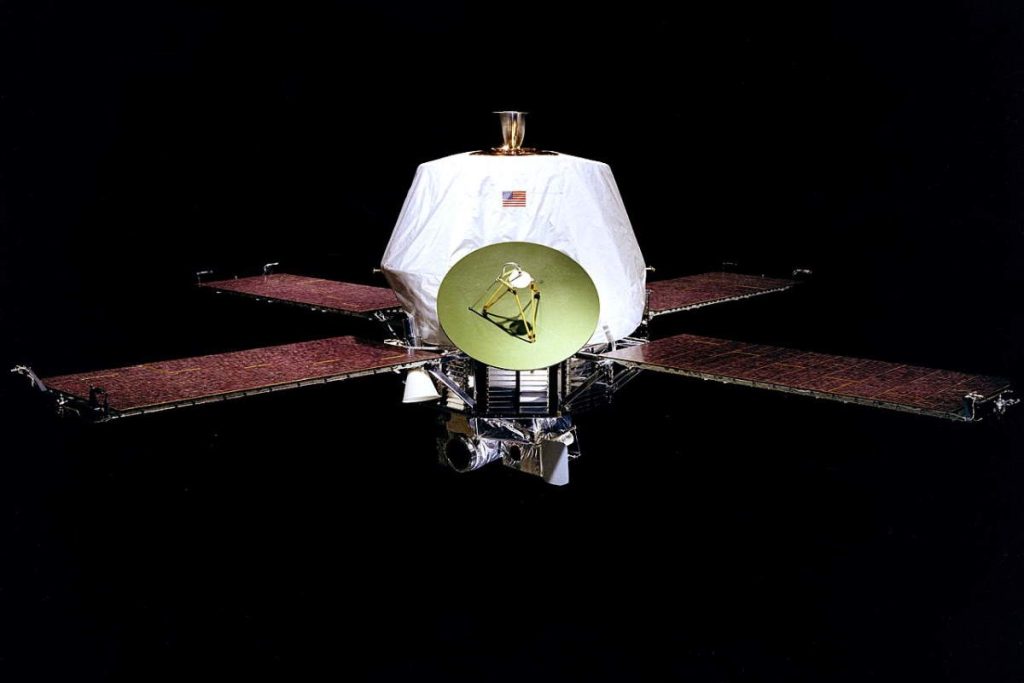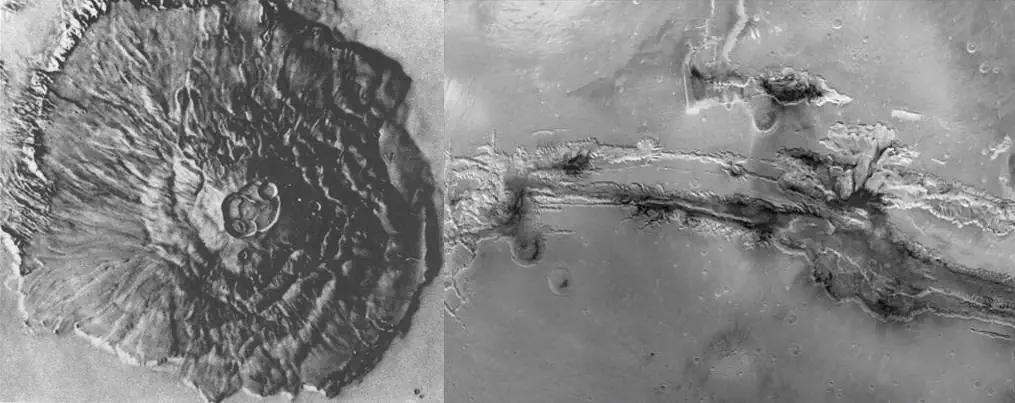On November 9, 1971, NASA’s Mariner 9 spacecraft entered Mars orbit and became the first spacecraft to maintain an orbit around another planet than Earth. Mariner 9 beat Soviet Union’s Mars 2 by 13 days despite being launched 11 days later than its Soviet counterpart.
In about 11 months, the orbiter mapped 85% of the Martian surface and sent back more than 7,000 pictures, including images of Olympus Mons (the highest mountain in the Solar System), Valles Marineris, and two natural satellites of Mars, Phobos, and Deimos.
Today’s (November 14) story of what happened this day in Science, Technology, Astronomy, and Space Exploration history.
Mariner 9

Mariner 9 was launched on May 30, 1971, from Cape Canaveral on top of an Atlas SLV-3C Centaur-D rocket. It had four scientific instruments:
- Imaging System
- Ultraviolet Spectrometer
- Infrared Spectrometer
- Infrared Radiometer
When the probe arrived at Mars and entered its orbit on November 14, 1971, planetary scientists were surprised to find the atmosphere was thick with “a planet-wide robe of dust, the largest storm ever observed.”

Mariner 9 continued to operate until October 27, 1972, well past its design life. While it was operational, the probe transmitted 7,329 images. The photographs returned by the Mars probe revealed a planet far more complex than scientists expected based on the limited imagery from earlier spacecraft. Some of the most significant photos were:
- The first detailed views of Mons Olympus, the solar system’s largest volcano. Its height is 21.9 km (13.6 mi) above datum; 26 km (16 mi) local relief above plains (at least two and a half times the height of Mount Everest) and 374 miles (600 km) wide (nearly the size of the state of Arizona).
- Valles Marineris, a canyon system that dwarfs the Grand Canyon – extends over 3,000 kilometers (1864 miles) long, spans as much as 600 kilometers (373 miles) across, and delves as much as 8 kilometers (5 miles) deep. That giant canyon system is named after Mariner 9 in honor of its achievements.
- Martian moons Phobos and Deimos. The larger moon, Phobos, a 17x14x11-mile (27×22.5×18 km) potato-shaped object, appeared to be heavily cratered, with one crater the result of an impact nearly large enough to have shattered the body. Deimos, the smaller moon with dimensions of 10x7x7 miles (16x11x11 km), appeared to have a dustier surface with fewer large impact craters. Based on the moons’ size and appearance, scientists believe they are asteroids captured by Mars in the distant past.
Mariner 9’s photographs also gave useful information to select candidate landing sites for the Viking landers launched toward Mars in 1975.

Mariner 9 also noted seasonal changes on the red planet. For example, the spacecraft saw Mars’ polar caps receding and advancing much as Earth’s polar caps do. Its instruments indicated the north polar cap to be composed of a mixture of water ice and frozen carbon dioxide. The spacecraft also observed the effects of sandstorms, cloud formations, and haze in Mars’ thin upper atmosphere, thought by scientists to be crystals of frozen carbon dioxide.
Today, Mariner 9’s location is unknown. The spacecraft is either still orbiting Mars, has already burned up in the Martian atmosphere, or has crashed into the surface of the red planet.
Sources
- “Mariner 9: First Spacecraft to Orbit Mars” on Space.com
- Mariner 8 & 9 on the NASA Mars Exploration Program website
- Mariner 9 (Mariner I) on the NASA Jet Propulsion Laboratory website
- Space Shuttle Endeavour’s Touchdown Meets Columbia’s Salute [An amazing photo from the past] - February 29, 2024
- Moon Landings: All-Time List [1966-2024] - February 23, 2024
- From Orbit to Ordinary: 10 Earthly Applications of Space Technology - January 23, 2024
